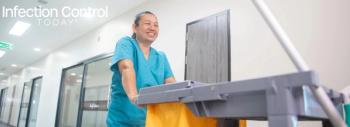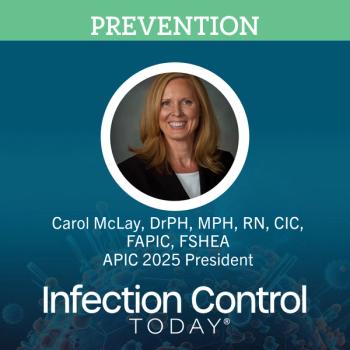
Antibiotic Crisis Makes Multimodal Intervention a Top 2014 Priority, Says Hygiene Advocate
The alarming and persistent news forewarning of an antibiotic crisis should make multimodal intervention a comprehensive approach to infection control in hospitals a top healthcare priority in 2014, says George Clarke, CEO of UMF Corporation and a long-time advocate of environmental hygiene.
For those running a hospital or healthcare facility, the incentives for multimodal are multiple, Clarke said. The increasing threat posed by the spread of antibiotic-resistant superbugs affects not only the lives of patients, but also a facilitys reputation and its financial health. Never before has there been such a clear-cut reason for looking beyond the popular single initiatives, like handwashing, to full-blown enterprise-wide multimodal intervention in the battle against healthcare-associated infections (HAIs).
Clarke cited several instances where experts have warned of the pending crisis, among them:
Steve Solomon, MD, director of the Office of Antimicrobial Resistance at the Centers for Disease Control and Prevention (CDC), who cautioned in a recent blog in Hospitals and Health Networks Daily that if we dont stop the spread of antibiotic-resistant germs, we are going to go over a cliff and fall back into the situation we were in during the pre-antibiotic era, when there were no treatments left for the very dangerous infections.
Margaret Chan, MD, director of the World Health Organization, who said in an article in The Telegraph that bacteria were starting to become so resistant to common antibiotics that it could bring about the end of modern medicine as we know it.
Arjun Srinivasan, MD, associate director of the CDC, who said in a recent Frontline story that weve reached the end of antibiotics, period.
In September, the CDC issued a report, Antibiotic resistance threats in the United States, 2013, which states that every year 2 million people become infected with antibiotic-resistant bacteria and at least 23,000 people die annually as a direct result of these infections. According to this report, many more people die from other conditions that were complicated by an antibiotic-resistant infection.
Clarke says the CDC also makes clear that antibiotic-resistant infections can happen anywhere with data showing that most happen in the general community. For example, the MRSA that has emerged as a community pathogen is being found in the guest rooms of hotels, in prisons, in schools and in locker rooms, he says. In the news this year was how the careers of some NFL players have been adversely affected by infections caused by MRSA.
Still, most deaths related to antibiotic resistance happen in healthcare settings such as hospitals and nursing homes.
In fact, the U.S Department of Health & Human Services (HHS) estimates that between 1.6 million and 3.8 million infections occur each year in long-term care facilities with an estimated 150,000 additional hospitalizations and 380,000 additional deaths among nursing home residents, while adding an estimated $673 million in additional health care costs.
If all of this isnt enough to give incentive to healthcare administrators to consider multimodal intervention, there are plenty of other reasons, Clarke says. In this new era of pay-for-performance, the need to increase and maintain HCAHPS (Hospital Consumer Assessment of Healthcare Providers and Systems) scores, the implementation of financial penalties, heightened patient awareness to not address the HAI problem can have a significant financial impact on U.S. hospitals.
Clarke says enterprise-wide multimodal intervention is the only kind of program that has any chance of success in confronting old but still prevalent issues, such as Clostridium difficile (C. difficile) and MRSA, and the new and quickly spreading HAI challenges such as carbapenem-resistant Enterobacteriaceae (CRE).
This is a program that is supported and heralded from the hospital C-suite down to the basement, including effective and comprehensive environmental hygiene, he says.
According to Clarke, a multimodal approach must include:
A dedicated infection prevention team and risk assessment
Active surveillance
Education and training
Adequate personal protective equipment
Environmental hygiene best practices supported by best-in-class products
Isolation precautions
Antibiotic stewardship
An effective hand-hygiene program that ensures maximum compliance
Post-discharge care.
For many, HAIs are at epidemic levels, Clarke says. In 2014, the resolve of everyone involved in patient care should be to make multimodal intervention a top priority.
Source: UMF Corporation
Newsletter
Stay prepared and protected with Infection Control Today's newsletter, delivering essential updates, best practices, and expert insights for infection preventionists.





